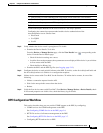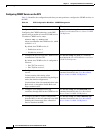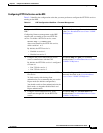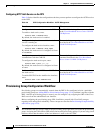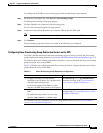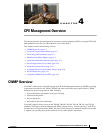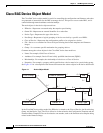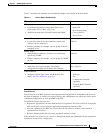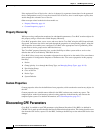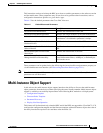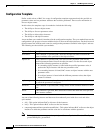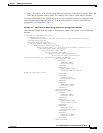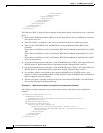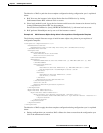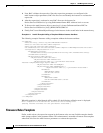
4-3
Cisco Broadband Access Center 3.8 Administrator Guide
OL-27172-01
Chapter 4 CPE Management Overview
Cisco BAC Device Object Model
Table 4-1 describes the attributes and relationships unique to each object in the data model.
Class of Service
Class of Service is an RDU abstraction that represents the configuration to be handed to the device in
the form of templates. It enables you to group devices into configuration sets, which are service levels
or different packages that are to be provided to the CPE.
The different Classes of Service are:
• Registered—Specified by the user when the device is registered. This Class of Service is explicitly
added to the device record using the application programming interface (API).
• Selected—Selected by the RDU for a device that, for one reason or another, cannot retain its
registered Class of Service.
• Related—Related to the device by being registered, selected, or both.
If the selected Class of Service for a device is changed, the Instruction Generation Service regenerates
instructions for the device configuration.
Table 4-1 Device Object Relationships
Object Related to ...
IP Device
• Could be preregistered or unregistered (See Device
Deployment in Cisco BAC, page 4-16).
• Attributes include Device ID (OUI-Serial) and FQDN
• Owner ID
• Provisioning Group
• Class of Service
• Device Type
Owner ID
• Is associated with devices and, therefore, cannot exist
without a device related to it.
• Enables grouping; for example, you can group all devices
belonging to Joe.
IP Device
Device Type
• Stores defaults common to all devices of a technology,
specifically CWMP.
• Enables grouping; for example, you can group all CWMP
devices.
IP Device
File
• Stores files used in provisioning; for example,
configuration template and firmware rules template
Class of Service
Class of Service
• Attributes include Type, Name, and Properties. (For
details, see Class of Service, page 4-3.)
• IP Device
• File
• Configuration Template
(optional)
• Firmware Rules Template
(optional)



